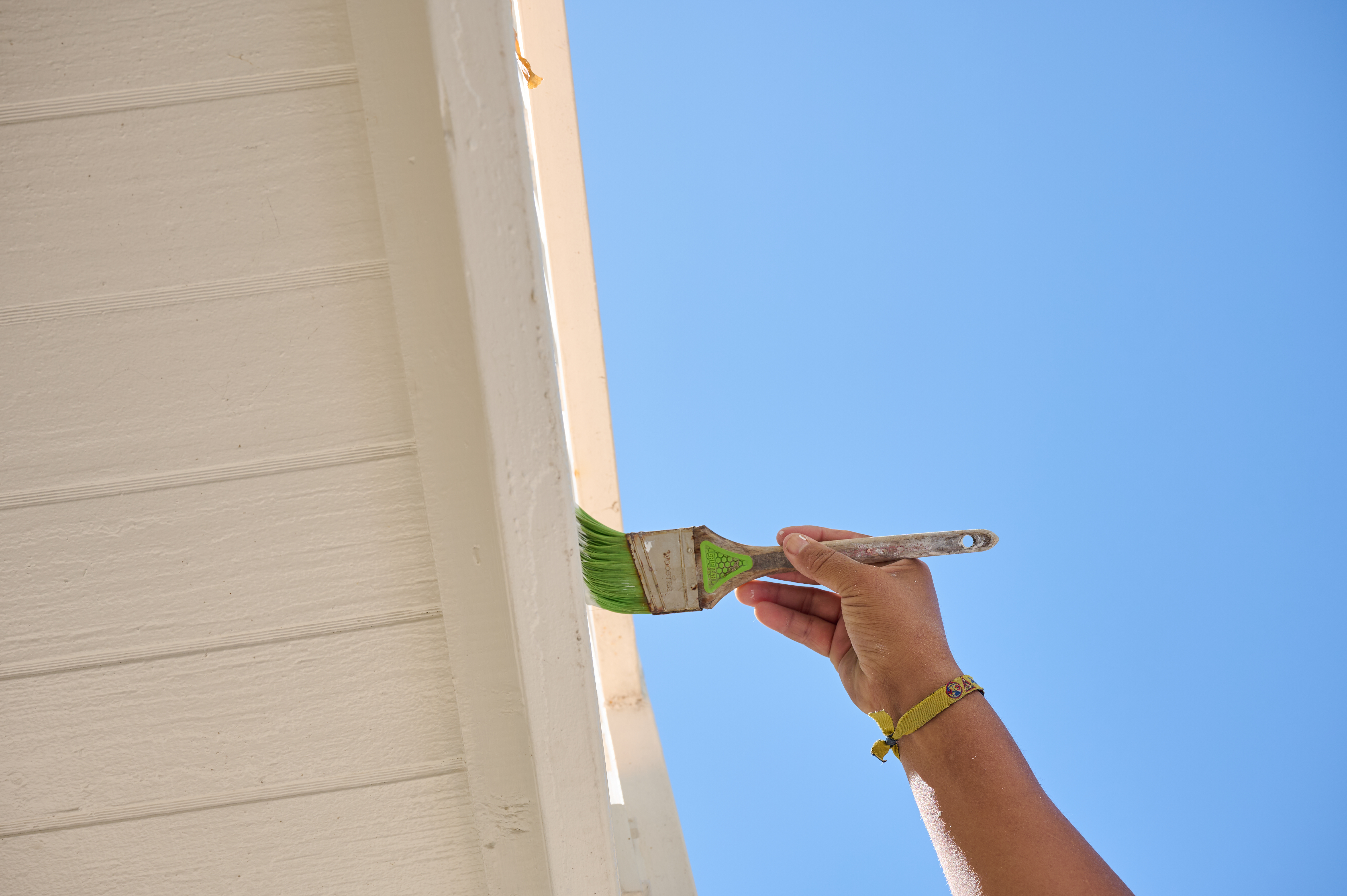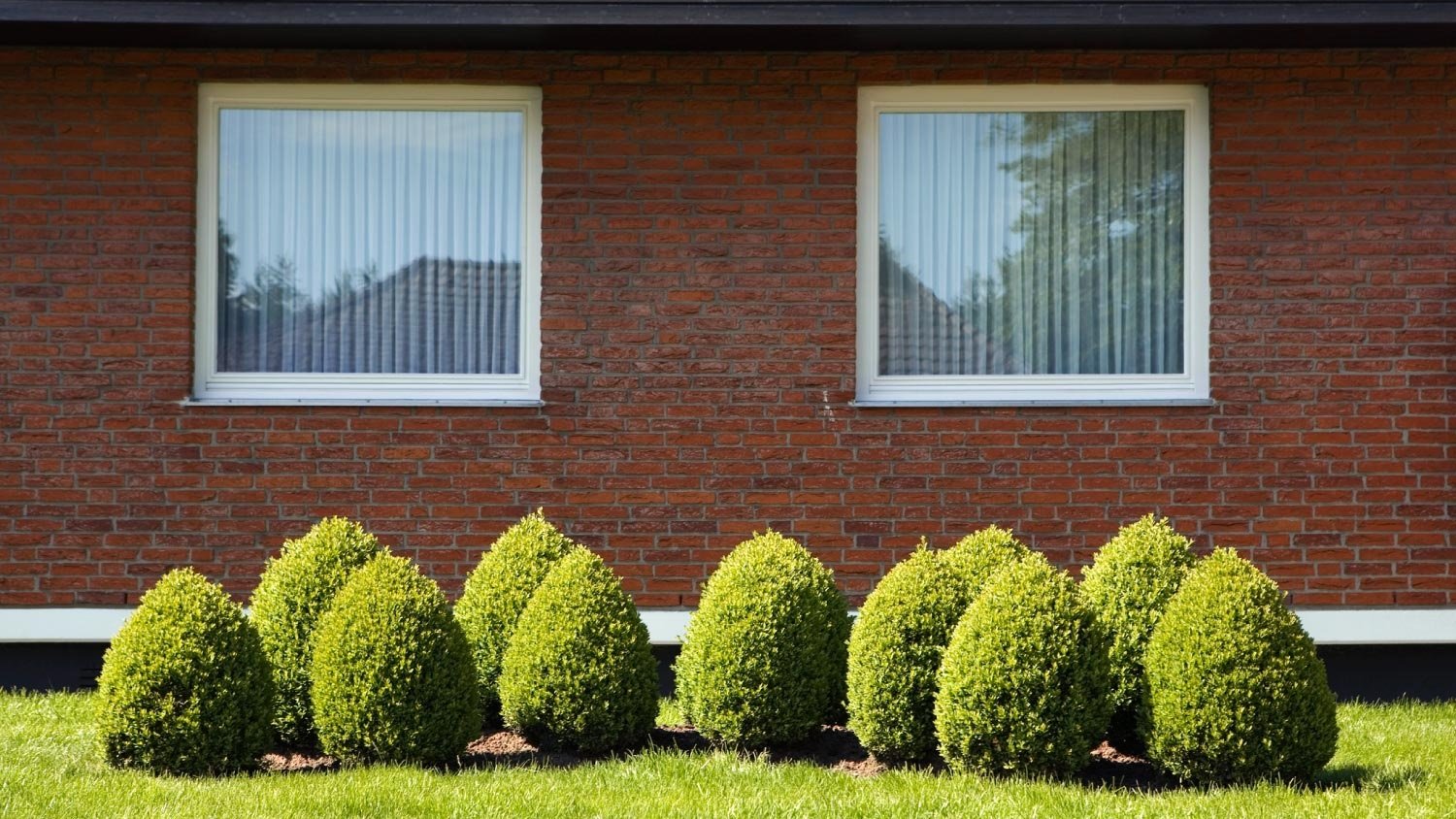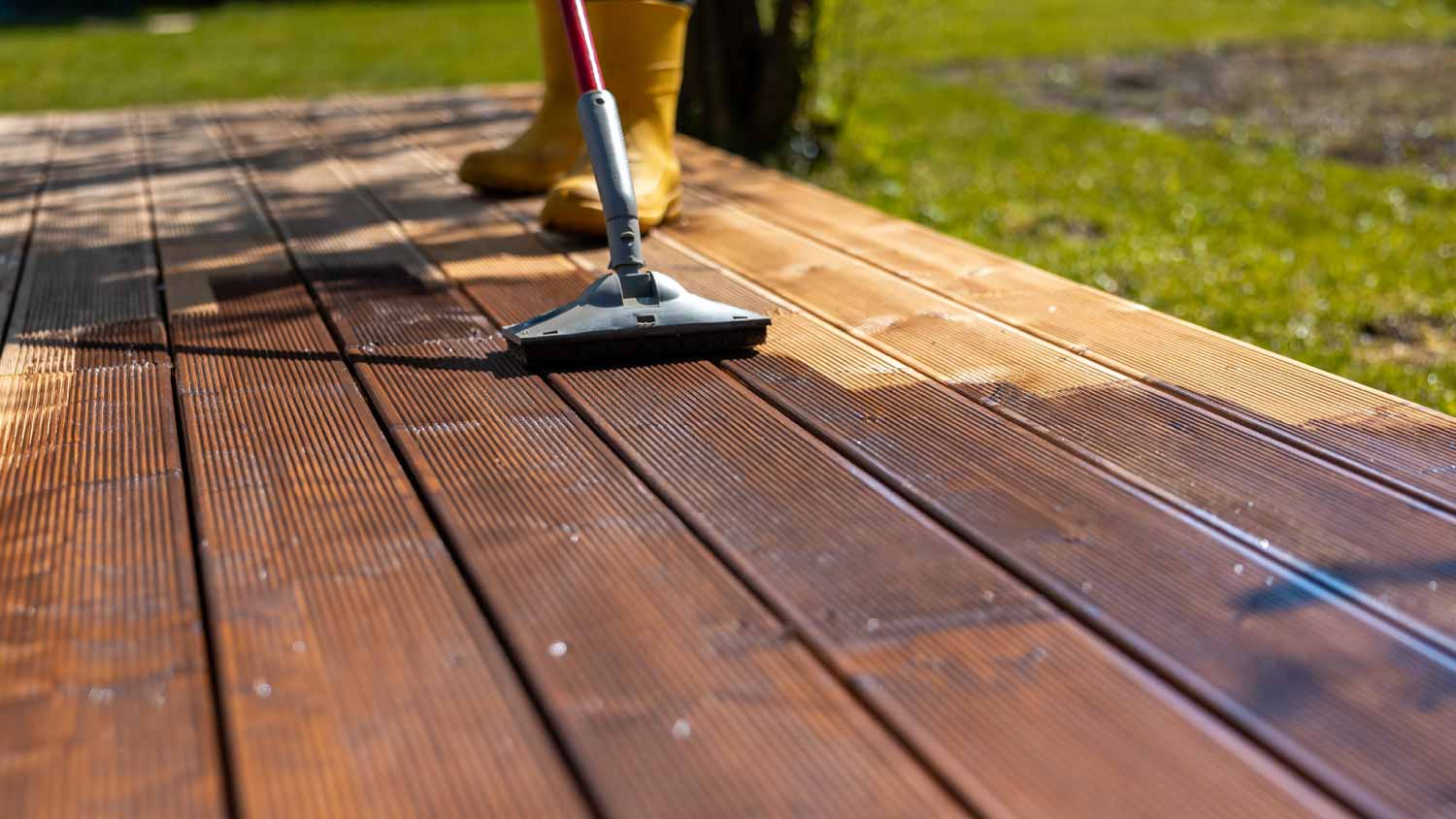
Painting your gutters can give your home the fresh finishing touch it needs to look its best. This guide walks you through the cost to paint gutters.
Brick staining costs an average of $4,200, but prices can vary dramatically based largely on the size and height of your home and the condition and color of the bricks.


On average, an exterior brick-staining project costs $4,200, but it can range from $900 to $12,500 and $1 to $4 per square foot.
The average cost to stain brick is $2.50 per square foot, which accounts for both labor and materials.
Brick stain costs between $30 and $60 per gallon, or between $130 and $170 per 5-gallon bucket.
Professional brick staining labor ranges from $40 to $80 per hour.
Staining brick is slightly more affordable than painting brick, which costs $1.50 to $4.50 per square foot.
Are you looking at giving your brick facade a facelift? Freshening up your brickwork is a relatively easy way to make a tremendous transformation and increase your home’s curb appeal. And, unlike painting, it retains the natural integrity of your home’s frontage and lets the brick breathe. Exterior brick staining costs an average of $1,200 to $10,000 and ranges from $1 to $4 per square foot.
How much you spend depends on whether you go the DIY route or not, the size of your home, and the condition of the brickwork.
Expect to pay an average of $2.50 per square foot to stain brick, including labor and materials. Typically, prices range from $1 to $4 per square foot, depending on the stain quality, brick condition, and exterior accessibility.
Labor and materials are the key costs when staining your home’s exterior brick, but the quality of the product and how much work you do yourself influence the amount you spend on the project.
If you’re only staining a limited section of your home’s exterior, you might want to opt for a smaller can, but, for full exterior jobs, you’ll make savings when you buy bigger buckets. Brick stain typically costs between $30 and $60 per gallon and $130 to $170 per 5-gallon bucket.
If you're tackling the job yourself, you might also have to invest in some basic tools. Sprayers cost upwards of $100. And, if you don’t already have them, you’ll need things like drop cloths, caulk, buckets, brushes, masking tape, sandpaper, scrapers, and a ladder. You may need to add another $200 or more to your budget.
If you hire an exterior painting contractor near you to complete the job, you’ll also have to factor in their labor costs. Typically, these range from $40 to $80 per hour (not including the cost of the materials).

The key element impacting how much you’ll pay for an exterior brick staining job is the size of your house, but there are several other important factors worth considering when evaluating costs.
Two- or three-story houses are trickier to stain than large bungalows. Expect a 25% to 50% labor price increase per additional story.
Labor costs increase when there's a lot of prep work for contractors (sometimes as much as doubling the price). DIYing non-technical prep work helps you make savings. Applying the stain to clean brickwork that’s free of debris, mold, or efflorescence ensures effective adherence.
If there is any significant damage or repointing is required, it makes sense to do these brick maintenance and repair jobs in advance to protect the integrity and longevity of the exterior. For complex repairs, you may need to hire a local masonry contractor.
For multi-story houses requiring scaffolding to complete the job, you may need to apply and pay for a permit. Regulations vary by local authority, so always check this in advance. They typically cost between $100 and $300.

Choosing a commonly available stain from your local hardware store can help keep costs low. But if your vision board requires something more custom or more than the average number of coats to achieve the desired look, be prepared to pay more. The most commonly used brick stain colors are brown, black, and red.
Most of the time, pros apply the stain using a sprayer. It’s a quick, easy method that provides even coverage. Sometimes, you may want to stain the brick but not the grout for a specific type of finish. This requires application using a brush, which is much more time-consuming and can cost more than double that of applying with a sprayer.
Staining brick is cheaper than painting. The difference in price between staining and painting brick is small, but every dollar counts, especially if you’re tackling a large project. As noted, staining brick costs $1 to $4 per square foot, compared to $1.50 to $4.50 per square foot for painting.
Staining saves money in the long run, too, as it lasts much longer than paint. Instead of paying to repaint the brick in 3 to 5 years, stain can last for a couple of decades. Finally, brick itself lasts longer when stained, meaning there will be fewer repair costs as time goes on.
You can semi-permanently stain brick. Unlike paint, which sits on the surface, stain penetrates the brick’s porous surface, bonding with it and creating a long-lasting finish. Staining also allows the brick to maintain its breathability, which can prevent moisture buildup that can lead to damage over time. While no treatment is truly permanent, a high-quality brick stain can last for decades with minimal maintenance.
If you're a savvy DIYer, you can save by staining exterior brickwork yourself (even if you have to purchase a sprayer and other application and cleanup tools)—hiring labor adds 50% or more to your project costs.
To avoid a DIY disaster and achieve an even, complete coverage, be thorough with the prep work and be ready to apply several coats because of the brick's porous nature. Safe ladder access is challenging in some homes, too. You might decide that hiring a local exterior painting contractor is a worthwhile investment to save time and stress.
Brick staining can get pricey, but there are several ways to potentially save money on it. Consider the following tips to reduce the cost of this project.
Do the pressure washing and cleaning prep work yourself instead of paying for professional cleaning.
Choose a lighter stain color since darker stains often require multiple coats and more product.
Buy stain directly from masonry supply warehouses rather than retail stores to get better bulk pricing.
Compare quotes from multiple contractors to find the best price.
Fix any mortar issues yourself before staining, as pros will charge extra for repairs
Use mineral-based stains rather than more expensive acid-based options for basic color changes
Schedule the project during the off-season when contractors may offer discounts.
Home is the most important place on earth, which is why Angi has helped more than 150 million homeowners transform their houses into homes they adore. To help homeowners with their next project, Angi provides readers with the most accurate cost data and upholds strict editorial standards. We extensively research project costs to develop the pricing data you see, so you can make the best decisions for you and your home. We rely on reputable sources, including the U.S. Bureau of Labor Statistics, academic journals, market studies, and interviews with industry experts—all to ensure our prices reflect real-world projects.
Want to help us improve our cost data? Send us a recent project quote to [email protected]. Quotes and personal information will not be shared publicly.
From average costs to expert advice, get all the answers you need to get your job done.

Painting your gutters can give your home the fresh finishing touch it needs to look its best. This guide walks you through the cost to paint gutters.

Painting your house increases curb appeal and durability, but you may need to rent a lift for the project. Here’s a breakdown of cost by lift type and height.

Do you want the color of your exterior doors to really pop? Learn about the labor cost to paint the front door, back door, and other entranceways.

You choose it to withstand the elements, but can you paint a vinyl fence? The answer is yes, but it might not be the best when your fence shows wear and tear.

How much stain do I need for my deck? It’s one of the most important parts of any deck revival project. Here’s how to calculate what you need.

The truth to the question, “Is it better to spray or roll on exterior paint?” is that both have pros and cons, but a few factors will help you decide on one.